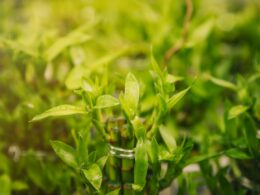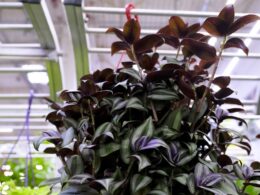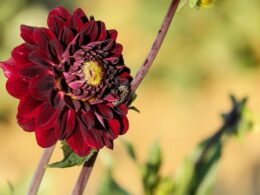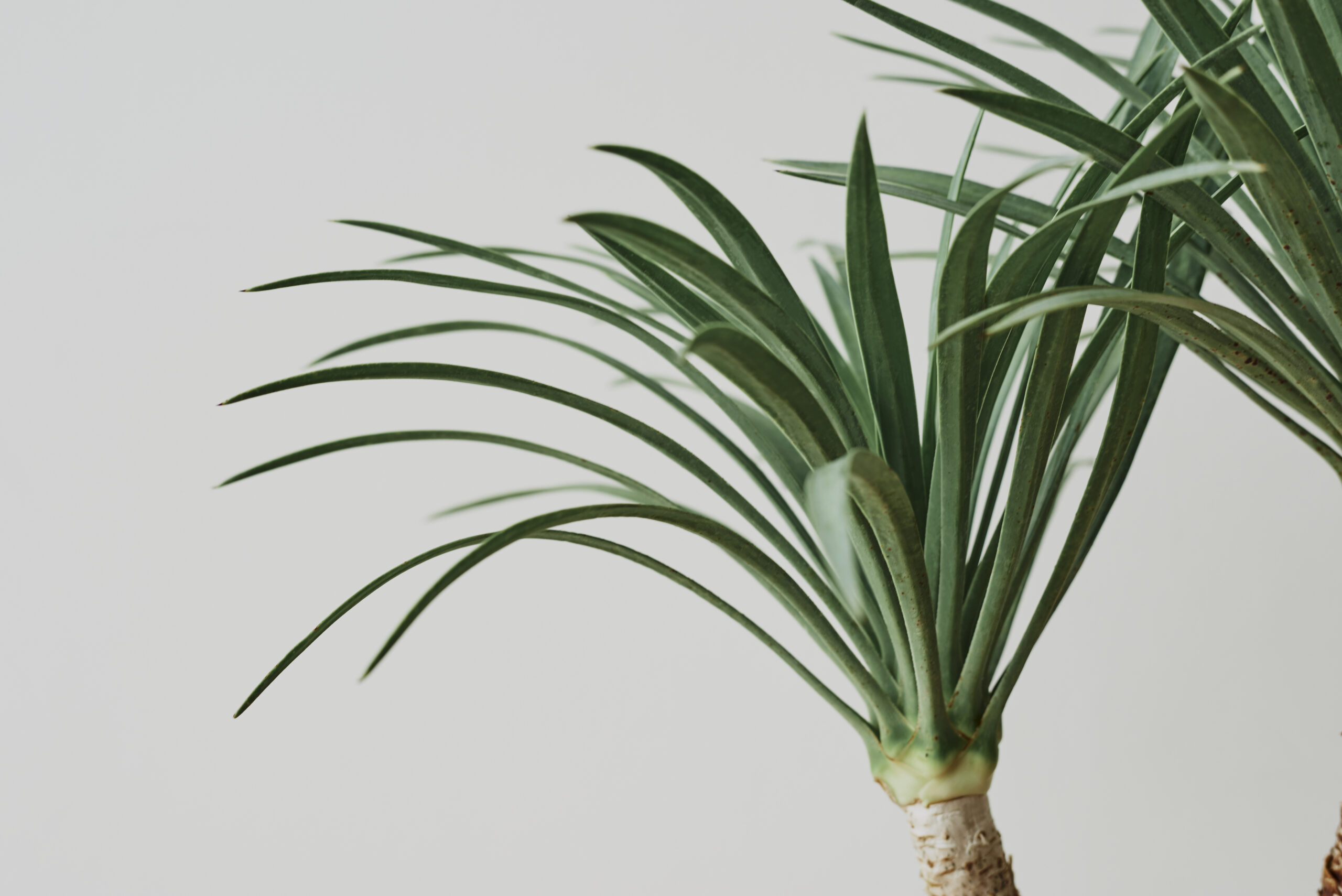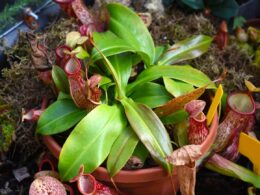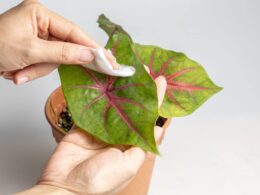What’s an Arrowhead Plant?
The arrowhead plant (Syngonium podophyllum) is a tropical plant that is native to Central and South America. It gets its name from the shape of its leaves, which are narrow and pointed at the tips, like arrows. It’s a popular houseplant because arrowhead plant care is easy, and it can thrive in a variety of conditions. As a relatively low-maintenance plant, it doesn’t require frequent watering or fertilizing.
Arrowhead plants can be grown in pots or planted directly in the ground, and they will typically reach a height of around 3 feet. Although they are not known for being particularly showy plants, the arrowhead plant’s glossy green leaves can add a touch of elegance to any room.
Arrowhead Plant Care: Watering
As with most plants, arrowhead vine plants need to be watered regularly in order to stay healthy. However, they are relatively drought-tolerant, so you don’t need to water them as often as other houseplants.
Frequency
Arrowhead plants should be watered about once a week, or when the soil feels dry to the touch. Be sure to empty any excess water from the saucer after watering, because, as said before, arrowhead plants are not fond of sitting in wet, soggy soil.
Light Requirements for Arrowhead Plants
Arrowhead plants can tolerate a wide range of light conditions, from low light to bright indirect light. If you choose to grow your arrowhead plant in low light, it will likely have fewer leaves and its growth will be slower. Conversely, arrowhead plants that are grown in indirect, bright light will have more bushy leaves and will grow more quickly. When arrowhead plants are exposed to direct sunlight, their leaves will be scorched, so it is best to avoid placing them in a spot where they will receive direct sunlight.
Fertilizing Arrowhead Plants
Arrowhead plant care involves fertilizing about once a month during the growing season (spring and summer). You can use either a liquid fertilizer or a slow-release granular fertilizer. Be sure to follow the directions on the fertilizer packaging, as arrowhead plants are sensitive to too much fertilizer. If you notice that your arrowhead plant’s leaves are turning yellow or brown, this is usually a sign of over-fertilization. In this case, stop fertilizing your indoor plant.
Temperature Requirements
Though most plants prefer warmer temperatures, the arrowhead plant is a little different. This tropical evergreen is native to Mexico, Central America, and the West Indies, and it thrives in high humidity and moderate light. In its natural habitat, the arrowhead plant grows under the canopy of taller trees, where it receives dappled sunlight throughout the day. As a result, this plant is actually quite tolerant of lower light levels, making it a good choice for growing indoors.
When it comes to temperature, however, the arrowhead plant prefers things on the cooler side. An ideal range for this plant is between 60 and 75 degrees Fahrenheit. Though it can tolerate higher temperatures, its leaves will begin to lose their color.
The Perfect Soil for an Arrowhead Plant
Arrowhead plant care is not particularly difficult when it comes to choosing the right potting soil, but it does prefer a light, well-draining potting mix. A good option for this plant is a peat-based potting mix with perlite or vermiculite added for extra drainage. You can also make your own arrowhead plant potting mix by combining one part peat moss with one part perlite or sand.
Syngonium Podophyllum Repotting
The arrowhead plant care involves repotting every two to three years, or when it becomes root-bound. When repotting, be sure to choose a pot that is only one size larger than the current pot. This plant does not like to be moved around too much, and it will likely go into shock if you try to repot it into a pot that is too large.
Toxicity
Arrowhead plants are not typically poisonous, but they can cause skin irritation in some people due to oxalates. If you have any concerns about arrowhead plant toxicity, it’s best to avoid contact with the plant’s sap. Also, try to keep pets and kids away from it if you don’t want their lips to go swelling!
Propagating the Arrow Plant
Many people like to propagate arrowhead plants by taking cuttings from the stems. To do this, remove a stem from the parent plant and insert it into a moist potting mix. Make sure the potting mix is well-drained, as arrowhead plants do not like to sit in wet soil. Propagation by division is also possible. To do this, carefully remove the plant from its pot and divide it into two or three sections. Replant each section in its own pot filled with moist, well-drained potting mix.
Why Your Arrowhead Plant Isn’t Growing
If you’re wondering why your arrowhead plant isn’t growing, there are a few potential reasons.
- First, arrowhead plants prefer bright, indirect light. If your plant is in a dark spot, it may not be getting enough light to grow.
- Second, they need well-draining soil. If your plant is sitting in water or soggy soil, the roots can rot, causing the plant to die.
- Third, arrowhead vine likes to be kept moist but not wet. Water the plant regularly, but make sure the soil isn’t too wet, or the plant will suffocate.
- Finally, arrowhead plants need to be fertilized every few weeks during the growing season. Use a balanced fertilizer and apply it according to the instructions on the package. If your arrowhead plant’s leaves are turning yellow or brown, this is usually a sign of over-fertilization. In this case, stop fertilizing the plant.
Are you ready to implement our arrowhead plant care tips? Let us know!








